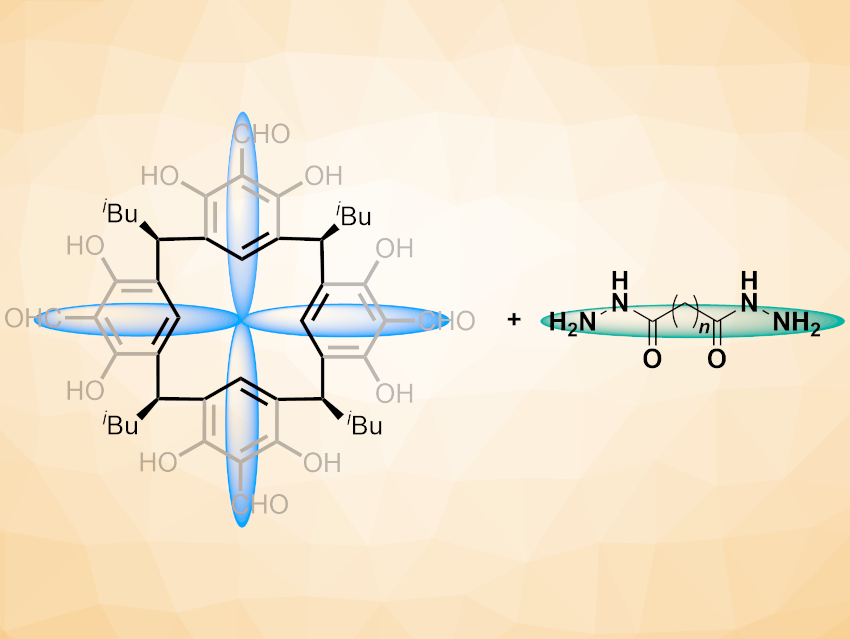Water pollutants such as heavy metals, radionuclides, or organic micropollutants can significantly harm the environment. Methods to efficiently remove these pollutants from bodies of water are, thus, useful. Porous organic cages (POCs), which can be considered a zero-dimensional version of covalent organic frameworks (COFs), could be used to capture pollutants in water. However, POCs are often linked by reversible imine bonds and can hydrolyze, which prevents applications in water.
Kongzhao Su, Daqiang Yuan, Fujian Institute of Research on the Structure of Matter, Chinese Academy of Sciences, Fuzhou, and University of the Chinese Academy of Sciences, Beijing, and colleagues have developed a synthetic method to build water-stable, hydrazone-linked POCs. The team used a concave, tetraformyl-functionalized calix[4]resorcinarene (pictured above on the left) and dihydrazide linkers (pictured above on the right) to build a variety of POCs by combining the reactants in N,N-dimethylformamide (DMF) at 100 °C. These building blocks can combine to form, e.g., a [2+4] lantern shape made from two calix[4]resorcinarene “caps” and four dihydrazide “pillars”. Other possible structures are, for example, a [3+6] triangular prism, a [4+8] square prism, or a [6+12] octahedron.
The team characterized the products using single-crystal X-ray diffraction. Depending on the dihydrazide linker used, the POCs showed window diameters and cavity volumes of 5.4–11.1 Å and 580–6,800 Å3, respectively. A [2+4] lantern-shaped cage was shown to be a POC absorbent useful for the removal of pollutants from water, such as Co2+ ions, I3– ions (mimicking radioiodine), or bisphenol A.
- Water-Stable Hydrazone-Linked Porous Organic Cages,
Miao Yang, Fenglei Qiu, El-Sayed M. El-Sayed, Wenjing Wang, Shunfu Du, Kongzhao Su, Daqiang Yuan,
Chem. Sci. 2021.
https://doi.org/10.1039/d1sc04531h




